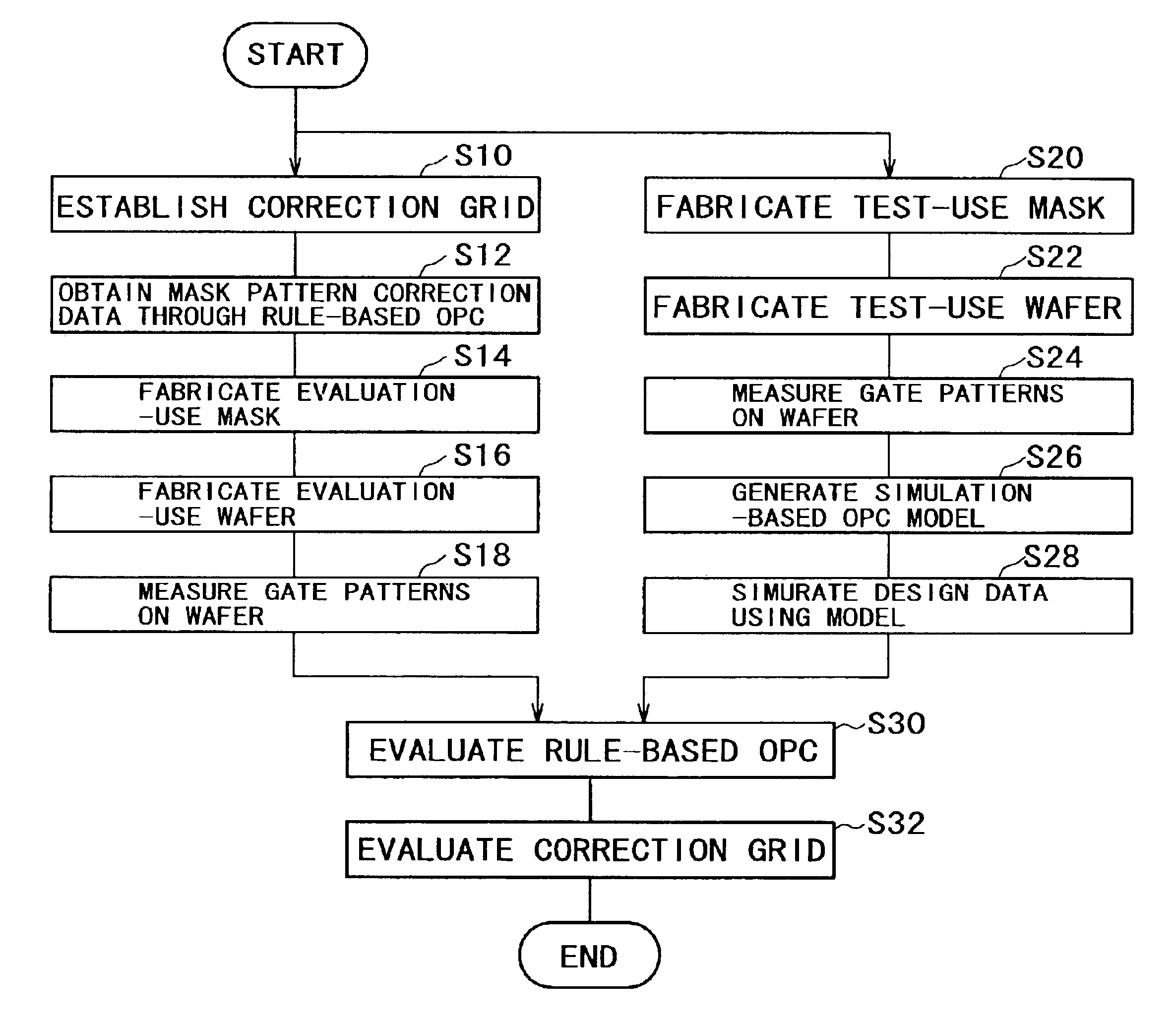Rule based OPC evaluating method and simulation-based OPC model evaluating method
a rule-based opc and model-based technology, applied in the field of rule-based opc evaluating methods and simulation-based opc models, can solve the problems of deterioration of the so-called line width controllability of gate patterns, inability in practice to measure the line width of all these patterns, and difficulty in determining whether selectively measured data are valid
- Summary
- Abstract
- Description
- Claims
- Application Information
AI Technical Summary
Problems solved by technology
Method used
Image
Examples
Embodiment Construction
[0034]How to implement the rule-based OPC evaluating method according to the invention will now be described.
[0035]FIG. 2 is a block diagram of rule-based OPC to be evaluated.
[0036]As shown in FIG. 2, rule-based OPC 10 is typically practiced by running software on a computer. Specifically, design data about a mask pattern are supplemented with bias data allowing for the optical proximity effect expected. The result is an output of correction data.
[0037]The rule-based OPC 10 has a correction grid established therein. The correction grid, the unit of the bias data, is a minimum increment in which to correct the mask pattern. It is on the basis of the correction grid that the correction data are output.
[0038]FIG. 3 is a block diagram of a simulation tool 20 that generates and outputs simulation data for evaluating the rule-based OPC 10.
[0039]The simulation tool 20, implemented by running suitable software on the computer, includes a simulation-based OPC model (kernel) 22 representing a...
PUM
 Login to View More
Login to View More Abstract
Description
Claims
Application Information
 Login to View More
Login to View More - R&D
- Intellectual Property
- Life Sciences
- Materials
- Tech Scout
- Unparalleled Data Quality
- Higher Quality Content
- 60% Fewer Hallucinations
Browse by: Latest US Patents, China's latest patents, Technical Efficacy Thesaurus, Application Domain, Technology Topic, Popular Technical Reports.
© 2025 PatSnap. All rights reserved.Legal|Privacy policy|Modern Slavery Act Transparency Statement|Sitemap|About US| Contact US: help@patsnap.com



